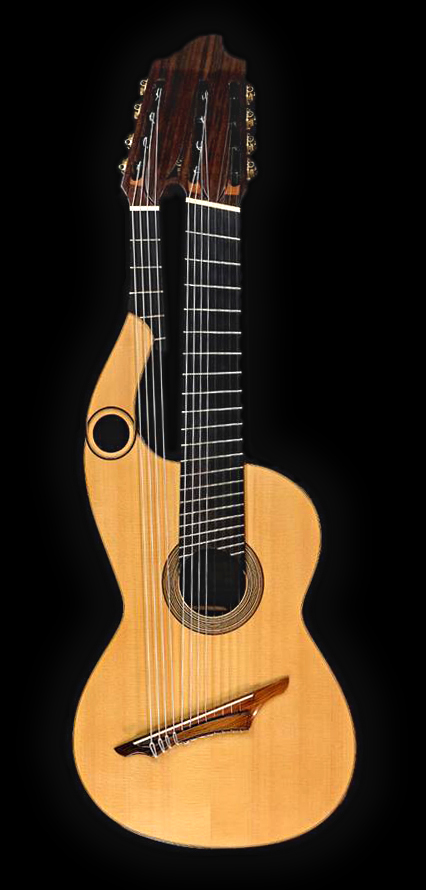
As I mentioned in the final chapter of our Genoa trip, in June, 2017 I met a Genovese classical guitarist who had come to the attention of my colleague Franco Ghisalberti after inventing a new harp guitar variant. Franco was confused by the instrument, and after I met Massimo Traffano at the reception following the concert of Fabrizio Giudice and discussed it briefly, I was similarly confused by its description! I was therefore eager to wrangle a meeting during my trip, and Massimo volunteered to bring it by our hotel at my convenience.
Having no idea what to expect, I was delighted to discover an interesting, well-thought-out (and well-built) new invention: The “Brahms-Harp Guitar.”
To understand the “B-HG”, one first needs to be familiar with the “Brahms guitar” of Scottish guitarist Paul Galbraith. Fortunately, I was. Frank Doucette turned me on to him many years ago and took me to one of his rare Los Angeles concerts – complete with his giant resonator box. (By the way, if you ever get a chance to see Paul, do. His upright, cello-position technique is fascinating to watch and adds a new chapter to virtuoso guitar playing.) Galbraith’s guitar is an 8-string, with an additional high A on top and low A on the bottom. The story goes that he chose that configuration to be able to play a particular piece by Brahms and it became forever known as the “Brahms guitar.”
Being a fan of Galbraith and similarly desirous of playing piano music on the classical guitar, Massimo then combined the Galbraith concept with a hollow arm harp guitar, inspired by Taraffo’s instrument and legacy (as is every guitarist in Genoa by now, thanks to Franco’s tireless efforts).
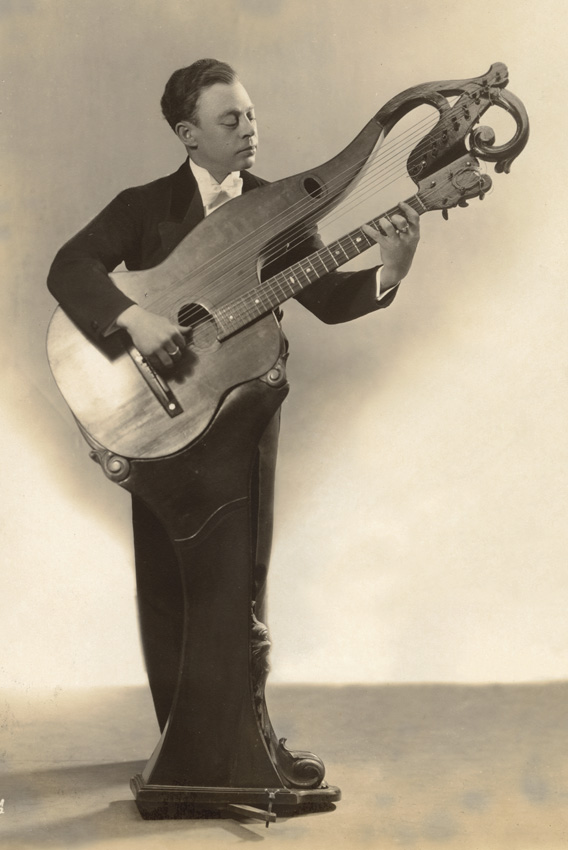
(Taraffo above, Galbraith below)
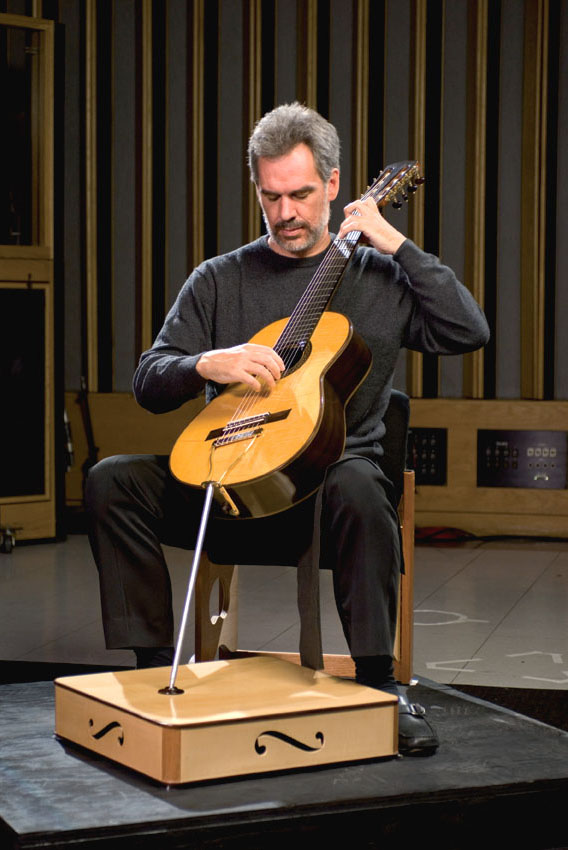
In April 2014 he commissioned classical guitar luthier Ennio Giovanetti to build it and it was completed that October. Ennio lives and builds in a small village within Gropparello, about 80 miles northwest of Bologna.
This is what Massimo Traffano surprised me with that morning, greeting us at our hotel with his charming wife Alice Careddu – the couple immediately spoiling us with their excellent English. We spent a good hour together as Massimo shared the story of his clever invention. And yes, we’ll get to that second set of frets…
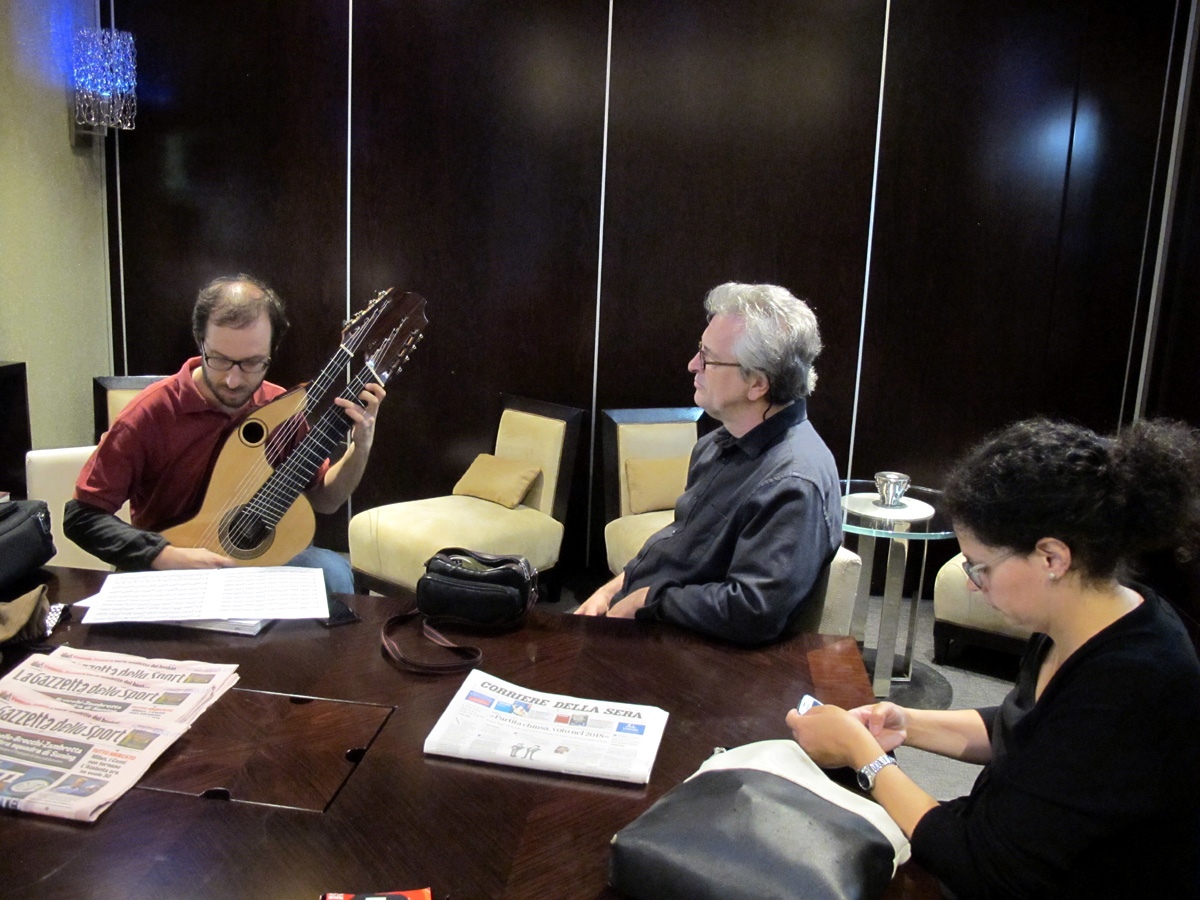
Wanting to add more flexibility to the 8-string Brahms guitar, he came up with the idea of leaving the neck configuration the same, while adding additional floating basses. As he could explore new options with open strings, he made one deviation from Galbraith’s neck tuning by having the eighth fretted string tuned to B instead of A. The final result yielded four additional strings and one additional note, a low G.
Here it gets slightly complicated: Massimo still wanted to play the fretted Brahms guitar neck as normal, so fully utilizes the frets on his low B string. The adjacent first two sub-basses are then re-entrant – D, then C, used only as “emergency backup” strings if the fingering on the B string becomes too difficult. The final two sub-basses – A and G – then descend from the neck’s B. Of course, since the lowest neck string can always be used as an open string, in effect, Massimo has the exact same five open notes as our common Knutsen and Dyer American harp guitars (GABCD) – just in different order!
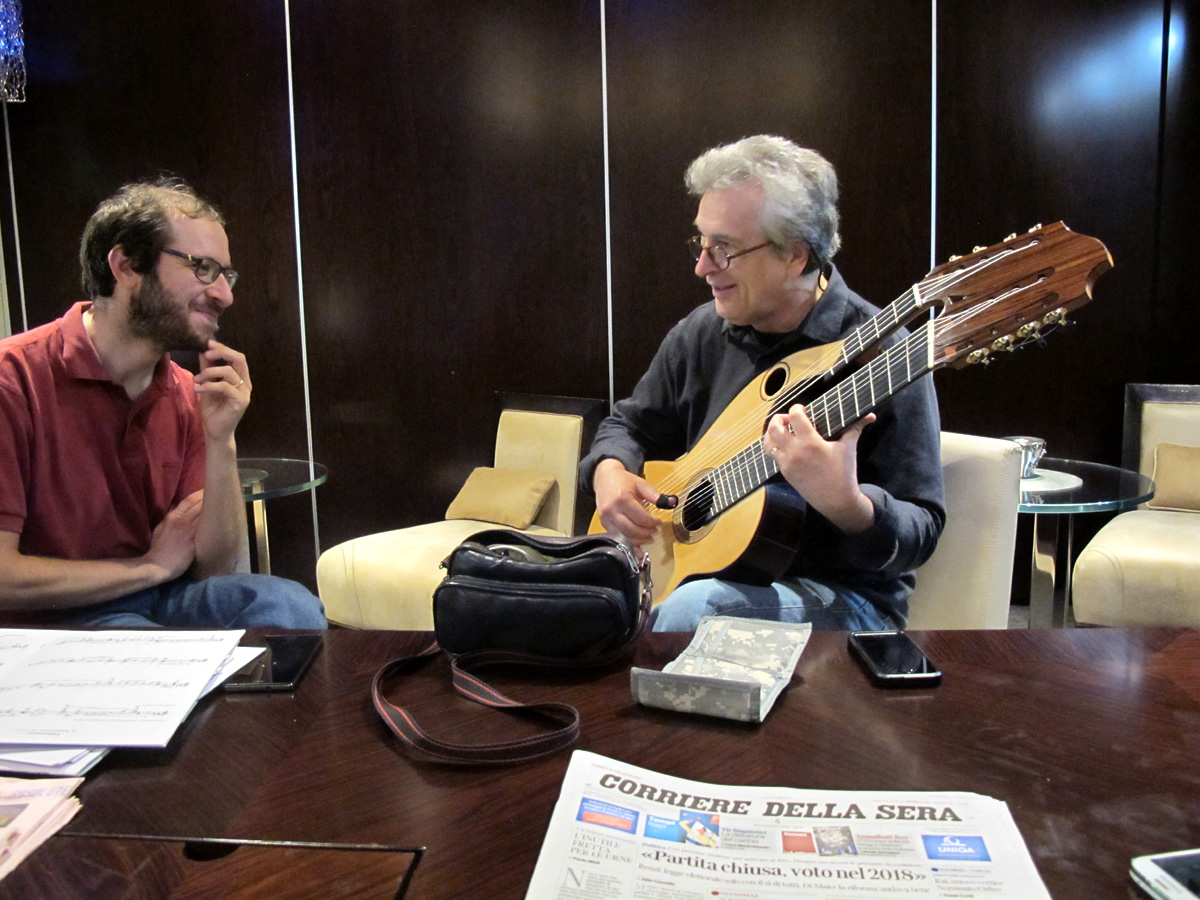
This non-linear tuning, along with the fact that the neck’s standard six strings are buried in the middle of an eight-string neck, made it extremely difficult for me to quickly wrap my head around it; after briefly floundering around on it like a toddler, I quickly handed it back!
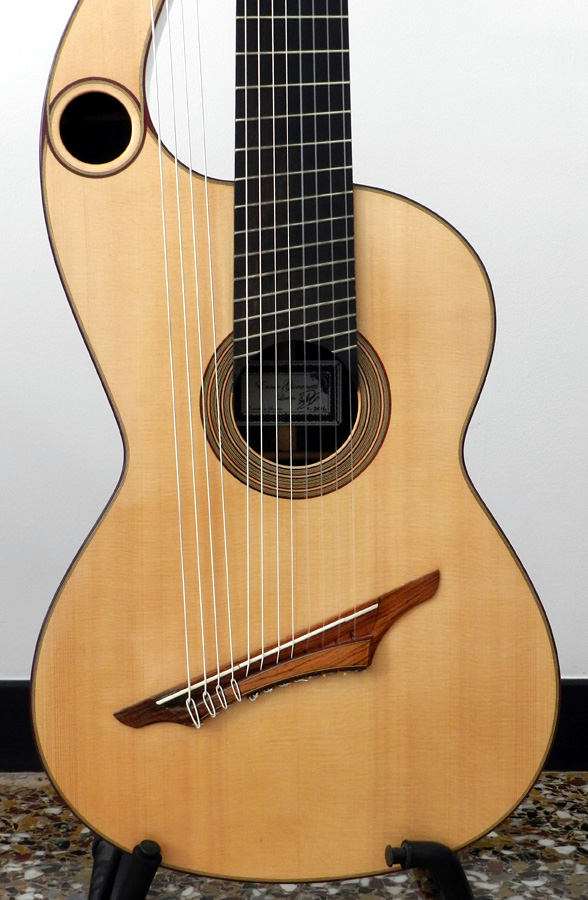
Due to its tuning requirements, the Brahms guitar naturally benefits from fan fretting, as the high A string can have a shorter string length without shortening the entire scale. The scale on Massimo’s 8-string neck from the first string to the eighth is thus 610mm to 655mm (24”–25.8”). For reasons unknown, Ennio wanted the first sub-bass at 650mm, with the rest slightly longer. The instrument does have a very balanced sound from top to bottom.
OK, those frets. As I – and probably you – immediately guessed, the hollow arm neck has frets for the purpose of affixing a capotasto. Massimo asked for that in order to be able to capo both necks together up 1 to 3 steps for transposing pieces – mainly to accommodate the vocal range of his professional soprano wife Alica when they perform together as Il Duo Cavatina.
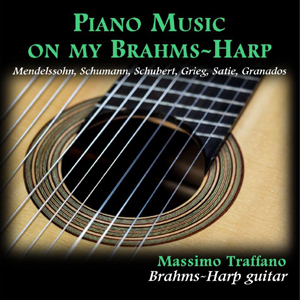
Since our meeting, Massimo completed his first CD of the instrument which I recently received (I’ve a few extra copies available – please email me asap if interested). Naturally, it’s filled with piano music transcribed for his instrument’s extended range. I immediately recognized two of the opening pieces – Felix Mendelssohn – we’ve heard Pete Bradshaw play them on his steel-string harp guitar at the last couple Harp Guitar Gatherings. Interesting that Massimo chose them also for his nylon-string version.
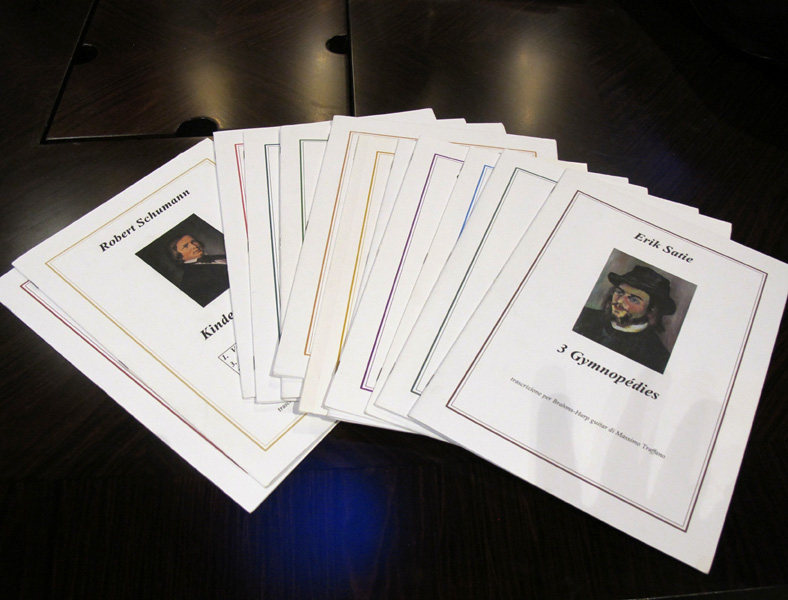 A selection of Massimo’s transcriptions of piano music for his instrument.
A selection of Massimo’s transcriptions of piano music for his instrument.
You can also see a couple of video clips and other news on Massimo’s Facebook page.
I was thrilled to find such harp guitar dedication and modern creativity in Pasquale Taraffo’s hometown, and hope to see it continue!

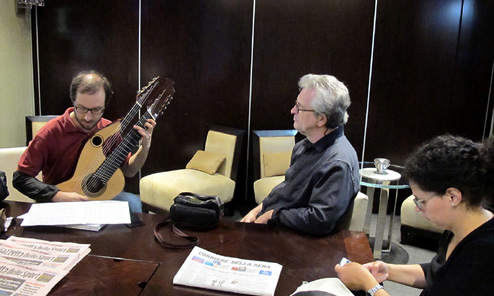
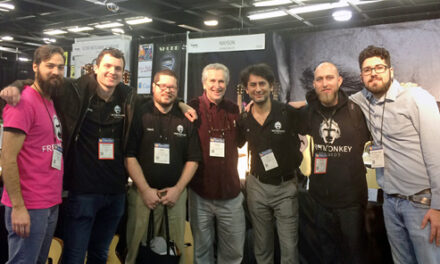
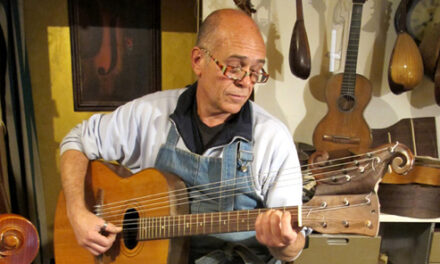
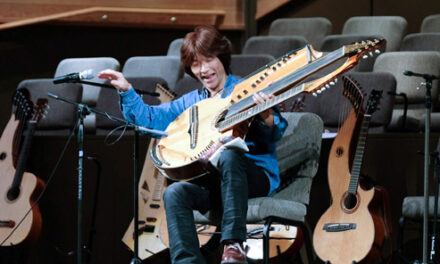
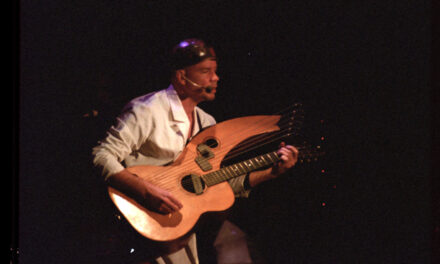
While the idea of having fretted sub basses may be (or perhaps not :-)) straight forward, the implementation is certainly clever. What a marvelous instrument!
Thanks for sharing this Gregg. I love the tech advance of the instrument.
I truly love the concept of partially fretted harp Strings! Blurs the whole idea of “harp” Guitar. But perhaps that’s to obvious, as I tend to be 😉 !